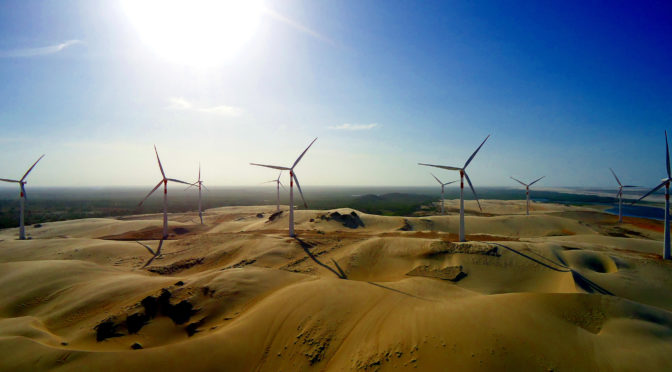The Global Wind Energy Council and OLADE, the Latin American Energy Organisation, have signed a MoU to cooperate on accelerating the development of renewable energy in Latin America by addressing key challenges to the region’s energy transition.
GWEC Market Intelligence sees Latin America as one of the regions globally with the highest potential for wind energy growth, projecting that the region could install up to 85GW of wind power capacity by 2030 in an accelerated scenario.
The growth of wind energy in Latin America will be an important driver of energy security, job creation, economic growth and climate mitigation for the region.
GWEC and OLADE to exchange information, commit to technical assistance and technology transfer, realise joint studies, research and publications, organise events and other mutual activities.
The Global Wind Energy Council and OLADE, the Latin American Energy Association, have announced they have signed a Memorandum of Understanding (MoU) to drive the energy transition in Latin America. Both organisations have the objective of promoting energy security and the energy transition in Latin America, and this MoU will establish the basis for cooperation for the design and implementation of projects as well as reports and roadmaps for renewable energy development in the region.
“We are delighted to join efforts with the wind power industry in Latin America, and GWEC as the ideal partner with its vast experience in the region. This partnership will be important to receive their knowledge and expertise of industry drivers for wind power integration at large scale into our markets and grid systems. This will be crucial in order to take advantage of this prominent renewable energy source in Latin America and ensure an uptake in the coming decade of renewable power investments to achieve our common goal of 70% electricity generation from renewable energy sources in Latin America by 2030 as part of the RELAC initiative for our climate commitments”, commented Alfonso Blanco, Executive Secretary at OLADE.
“GWEC sees Latin America as a region with one of the greatest potentials for wind energy globally. With 25.6GW of wind energy capacity already installed, the region could reach 85GW by 2030 in an accelerated scenario as energy demand rises and wind power replaces fossil fuels and meets new demand. With electricity consumption projected to rise by more than 70% by 2030 in Latin America, it is crucial that more clean energy is integrated into the region’s power systems to ensure energy security and limit the impact of climate change to power economic growth,” says Ben Backwell. CEO of GWEC.
“Policymakers now recognise the important role renewable energy plays to drive job creation, GDP growth, development of local industries and decrease dependencies on expensive energy imports – yet there are some key challenges that need to be addressed if the region is to realise the full benefits of the energy transition. We are thrilled to be working with OLADE to address these challenges and ensure Latin America’s clean energy future”, he added.
Under the framework of the MoU, the two organisations agree to exchange information, commit to technical assistance and technology transfer, realise joint studies, research and publications, organise events and other mutual activities, as well as facilitate the exchange of expertise for each organisation’s activities. By pooling together both organisation’s respective knowledge and expertise to address these topics, Latin America’s energy transition can be accelerated to deliver clean and cost-competitive energy to all in the region.
Key topics that GWEC and OLADE will cooperate on include: development of sustainable energy; energy economics; project financing frameworks for energy; energy planning, management and integration of wind power in the energy systems in the region; energy policy and regulatory frameworks.
The first joint report between GWEC and OLADE will cover renewable energy auctions in Latin America and will be published in early 2020.


